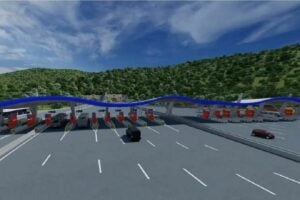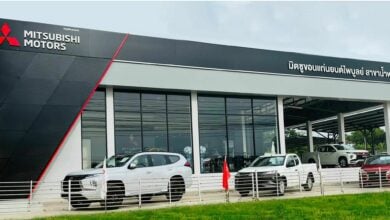Regular tyre rotation boosts safety and saves costs in Thailand
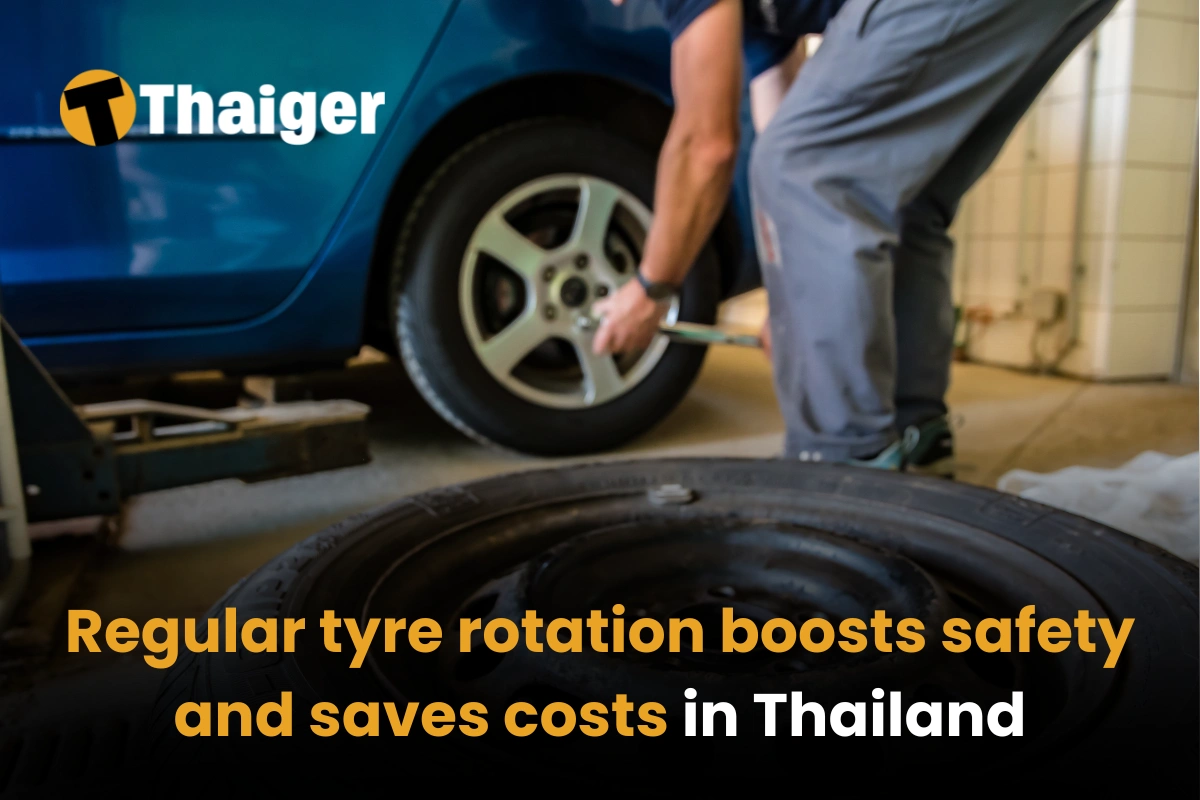
Uneven tyre wear often happens because front tyres carry more weight from the engine. Skipping tyre rotation can lead to shorter tyre life, higher costs, and increased risks. Regular tyre rotation evens out wear, keeps your car safe, improves driving, and saves money. This simple step is essential on Thailand’s varied roads. This guide covers the benefits and techniques to make tyre rotation part of your car care routine.
Understanding tyre rotation
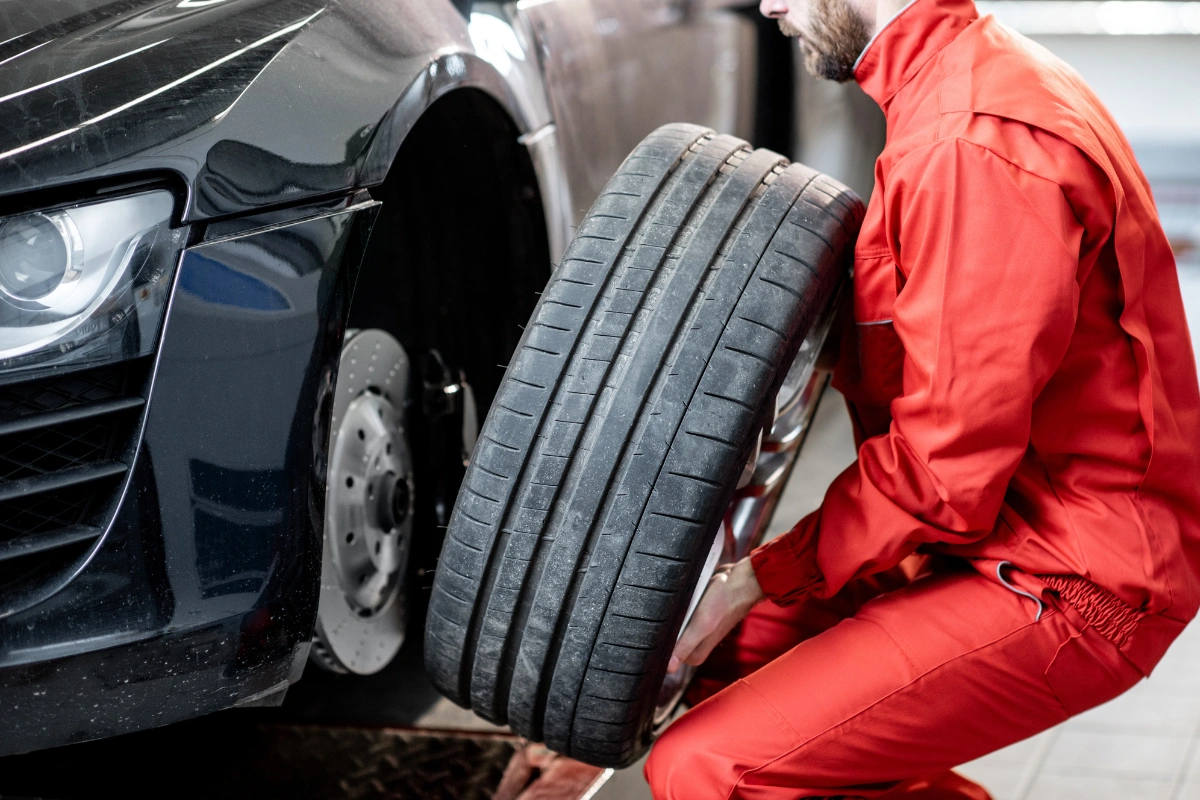
Tyre rotation is an important part of tyre maintenance. It involves regularly changing the position of your tyres to ensure even wear, improving their lifespan and your car’s performance.
What is tyre rotation?
Tyre rotation means switching the positions of your car’s tyres to make sure they wear evenly. This usually involves moving them front to back, side to side, or diagonally. Rotating tyres helps them last longer and improves your car’s performance. It also ensures safer handling, making it a key part of regular car maintenance.
The importance of regular tyre rotation
Regular tyre rotation is important because it helps tyres wear evenly, extending their lifespan and saving you money. It also reduces stress on the drivetrain, improving safety and handling. Skipping tyre rotation can lead to unstable driving and increase the risk of blowouts. Uneven tyre wear can also affect your car’s performance in different conditions. By rotating tyres regularly, you ensure a safer and smoother driving experience..
Key benefits of tyre rotation in Thailand
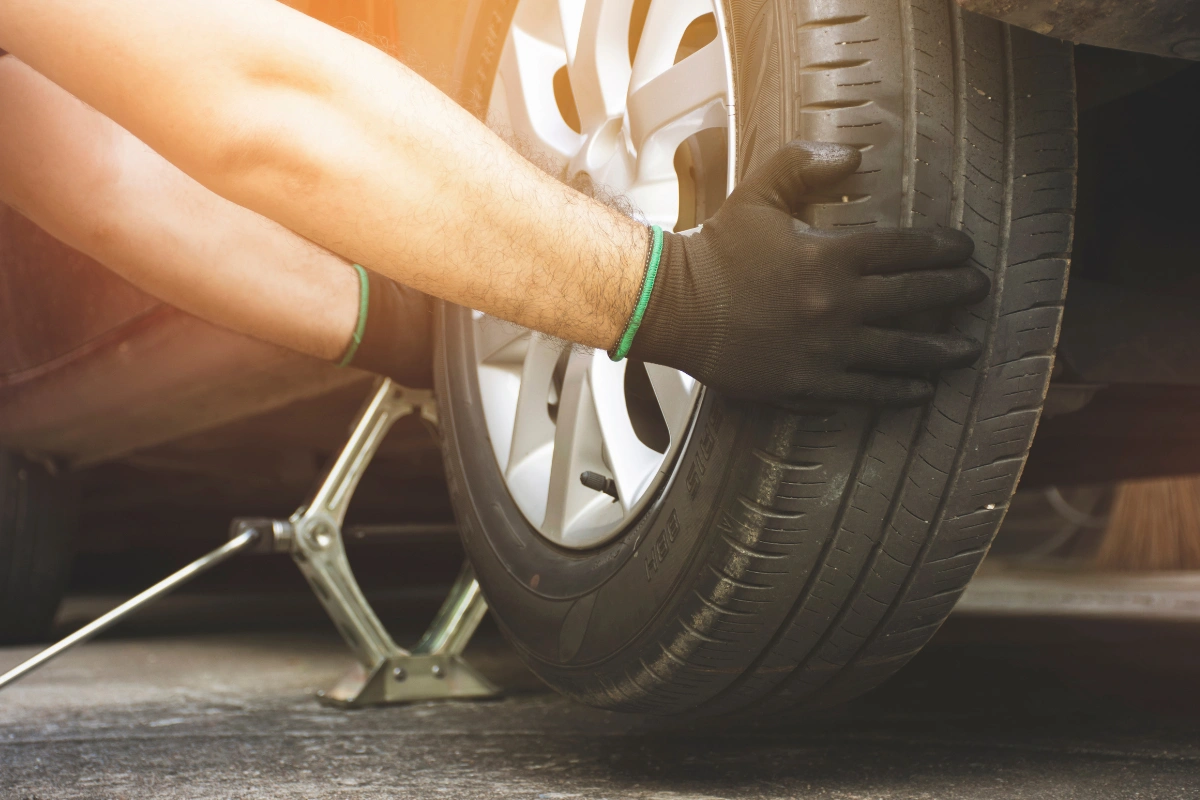
Driving in Thailand’s varied road conditions requires tyres that perform well, and regular tyre rotation is essential for maintaining their condition. Here are the main benefits of tyre rotation.
Longer tyre life
Tyres wear at different rates depending on their position, with front tyres wearing faster due to the engine’s weight and steering demands. This uneven wear can lead to costly, early replacements. Regular tyre rotation helps balance the wear, extending tyre life and saving money. It’s a simple maintenance step that improves performance and reduces long-term expenses.
Improved safety and control
Evenly worn tyres are essential for better grip, stability, and handling, especially on Thailand’s wet or uneven roads. Uniform wear keeps tyres in full contact with the road, improving traction and control. This reduces the risk of blowouts and hydroplaning, making driving safer. Regular tyre rotation helps ensure your vehicle handles predictably in all conditions, giving you confidence and peace of mind on the road.
Better fuel efficiency
Balanced wear and drivetrain health
Regular tyre rotation ensures balanced wear, which evenly distributes the load across all tyres. This reduces stress on the drivetrain, the system that transfers power from the engine to the wheels. By preventing uneven wear, tyre rotation helps extend the lifespan of the drivetrain, improves handling, and provides smoother rides. Less strain on the vehicle also means fewer mechanical problems, making driving more reliable and comfortable. Prioritizing tyre rotation protects your vehicle’s health and enhances your driving experience.
Skipping tyre rotation can lower safety and increase costs over time. By making it a regular part of maintenance, drivers can enjoy safer, smoother, and more cost-effective journeys in Thailand.
How often should tyres be rotated?
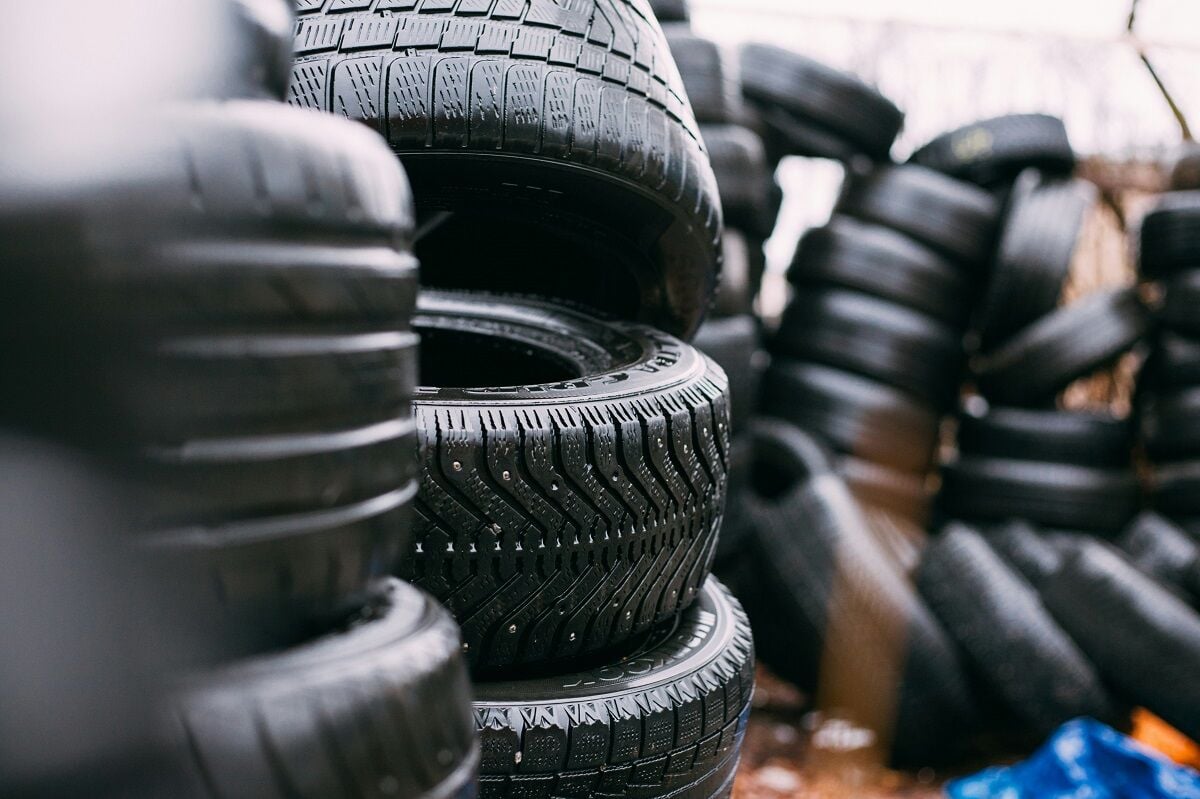
Regular tyre rotation is an important part of regular vehicle maintenance, ensuring safety and performance. How often it’s needed depends on a few factors.
General guidelines for tyre rotation
Most manufacturers recommend rotating tyres every 8,000 to 10,000 kilometers, or about every six months. Your vehicle’s owner’s manual will provide specific instructions. Visiting a trusted tyre service center ensures proper rotation and allows for checks on tyre health, air pressure, and tread depth.
Specific considerations for Thai road conditions
Thailand’s varied road conditions can cause tyres to wear out faster, making regular rotation even more important. Factors like vehicle type (front-wheel, rear-wheel, or all-wheel drive) and tyre design (directional or non-directional tread) affect the rotation schedule. Even the size and type of spare tyre can play a role. Keeping these factors in mind as part of regular vehicle maintenance helps maintain tyre performance and safety on Thailand’s diverse roads.
Recommended tyre rotation patterns
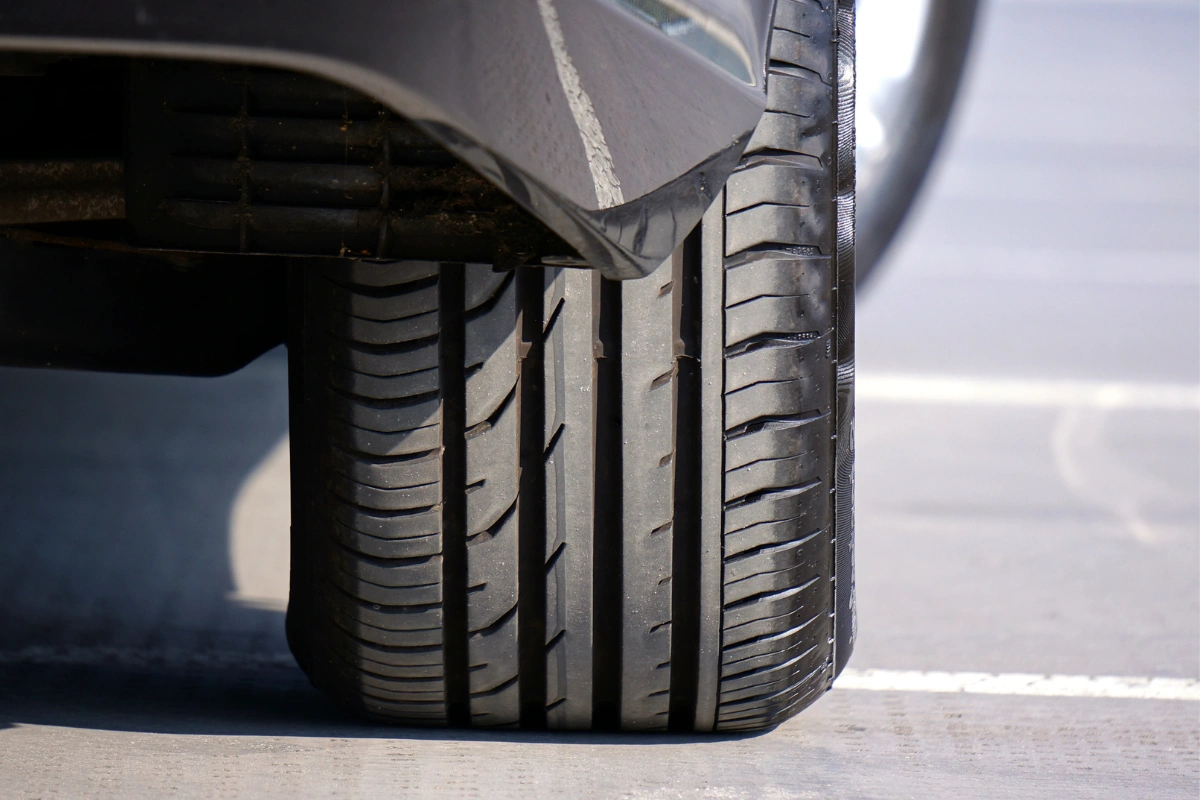
Rotating tyres in the correct pattern helps extend their lifespan, ensure even tread wear, and improve fuel efficiency, handling, and safety. The right pattern depends on your vehicle type, tyre design, and driving conditions.
Standard rotation patterns for different vehicle types
- Front-wheel drive: Move the front tyres straight to the rear. Swap the rear tyres diagonally to the front, with the right rear going to the left front and vice versa.
- Rear-wheel or four-wheel drive: Move the front tyres diagonally to the rear. Move the rear tyres straight to the front.
- Uniform tyres: For tyres of the same size, a cross pattern works for any drive type, swapping the front tyres diagonally with the rear tyres.
Special cases: Directional and studded tyres
- Directional tyres: These tyres have a tread pattern that only allows them to rotate in one direction. Swap the front and rear tyres on the same side (right front to right rear, left front to left rear).
- Studded tyres: Used in snowy conditions, studded tyres must follow local laws. Some areas allow them on all axles, while others restrict them to the rear axle. Rotate them based on these rules to ensure even wear.
Always inspect tyres during rotation for damage, check air pressure, and measure tread depth. Follow the guidance in your vehicle’s owner’s manual or seek advice from a trusted tyre service center to ensure proper rotation and vehicle performance. Regular tyre rotation keeps your car safe and improves road safety.
Understanding tyre expiry dates
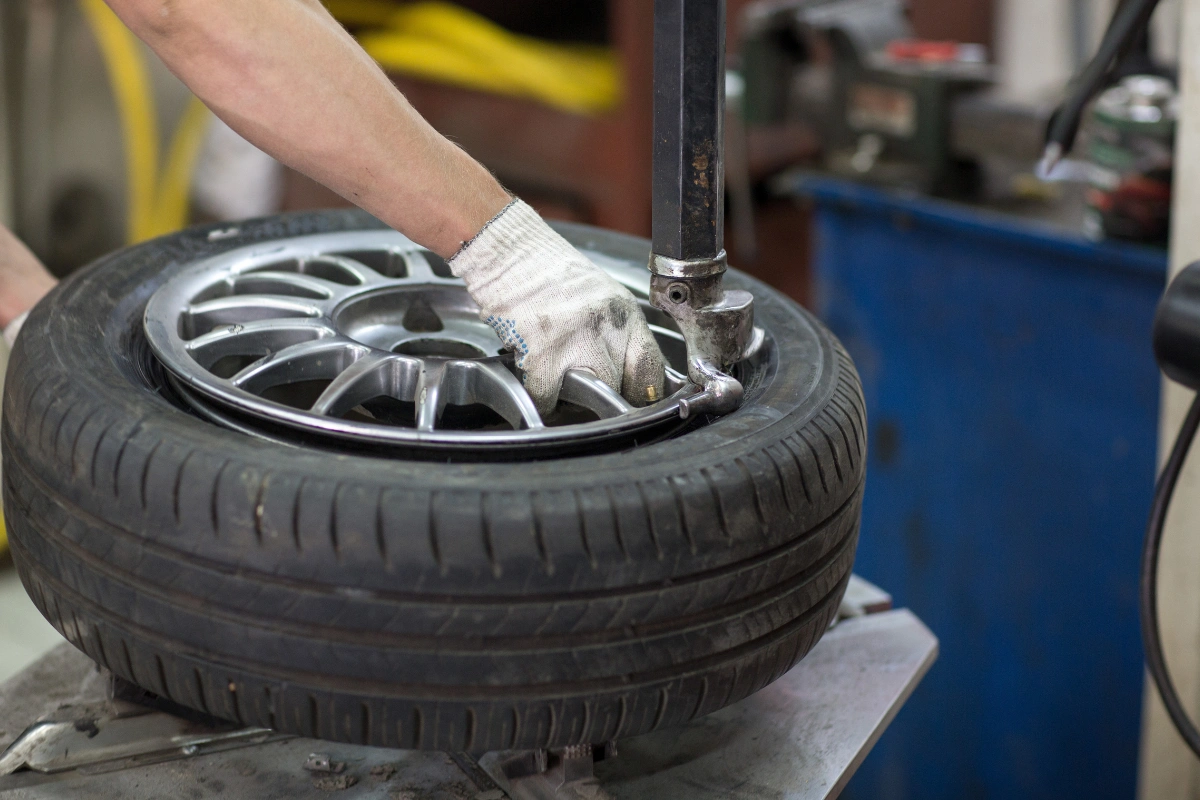
Tyre expiry dates are an important part of vehicle safety that every driver should know. While many focus on tread depth and tyre condition, the age of the tyres is just as crucial. Understanding how to check the manufacture date and the risks of using expired tyres helps ensure safer driving and better vehicle performance.
Why tyre expiry matters
Tyre expiry dates are vital for road safety. Over time, tyres degrade even if they appear fine, increasing the risk of failure and serious accidents. Expired tyres also reduce performance, affecting fuel efficiency, traction, and braking. Knowing and checking tyre expiry dates is essential for safe and reliable driving.
How to find the manufacture date
Tyres don’t have a traditional expiry date but include a manufacture date to determine their age. This date is on the tyre’s sidewall as a four-digit code inside an oval stamp. The first two digits show the week of production, and the last two digits show the year. For example, “0520” means the tyre was made in the fifth week of 2020. Most manufacturers recommend using tyres within six years of their production date, no matter how much they’ve been used. Always check this date on your tyres or when buying new ones to ensure safe driving.
Tyre maintenance tips for driving in Thailand
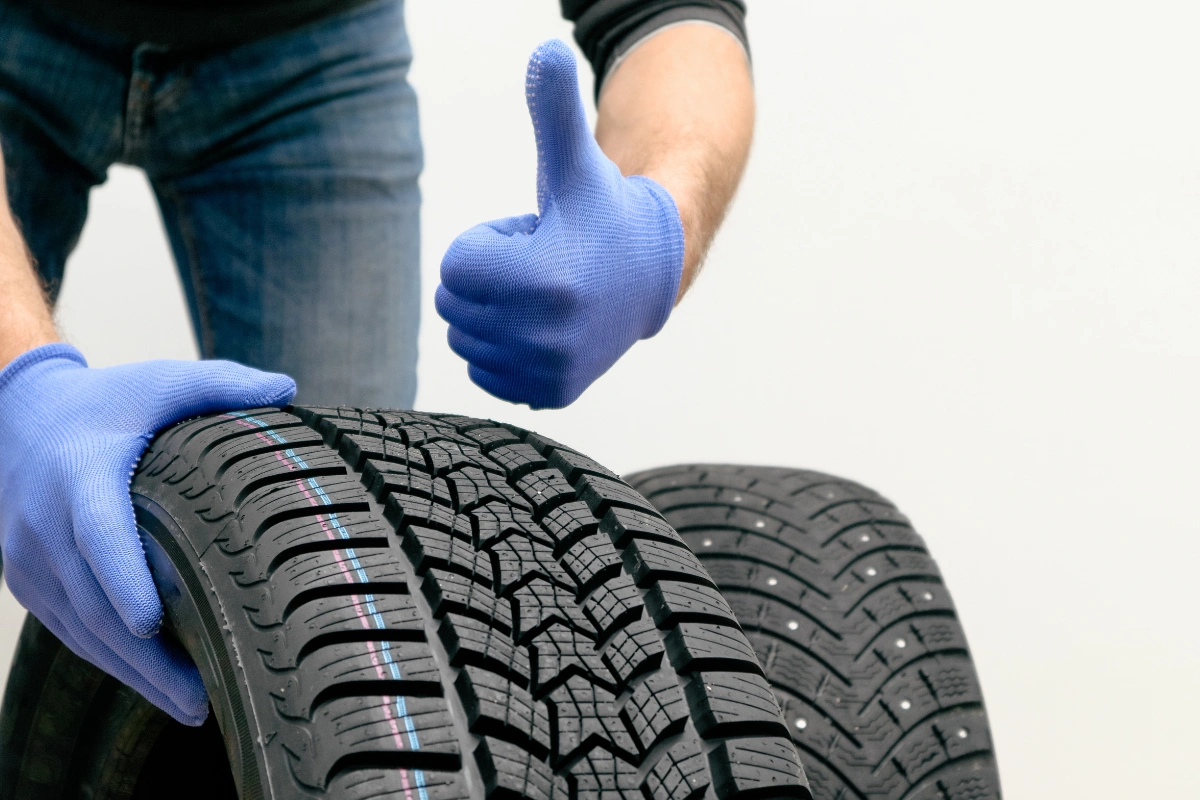
Driving in Thailand can be challenging due to its mix of smooth highways and rough rural roads. Proper tyre maintenance is essential for safe and comfortable travel. Here are some simple tips to keep your tyres in good condition:
- Adapt to road conditions: Rotate and balance your tyres regularly to ensure even wear. This improves fuel efficiency, handling, and safety on all types of roads.
- Check tyre pressure: Maintain the correct tyre pressure to prevent excessive wear and save fuel. Check it monthly or before long trips, and adjust based on the load and road conditions. Proper inflation improves traction and handling.
- Inspect for damage: Look for cracks, cuts, or uneven tread wear during regular inspections. Address any issues quickly to avoid costly repairs and ensure safe driving.
By following these simple steps, you can enjoy safer, smoother drives and explore Thailand’s beautiful roads with confidence.
Proper tyre maintenance is key to safe and efficient driving, especially on Thailand’s diverse roads. Regular tyre rotation prevents uneven wear, extends tyre life, saves fuel, and improves handling. Knowing the correct rotation patterns based on your vehicle and road conditions helps keep your tyres in top shape. Checking tyre expiry dates, maintaining proper pressure, and inspecting for damage are also important for safety and performance.
By following these simple steps, drivers can reduce costs, improve their vehicle’s performance, and enjoy safer journeys. If you’re planning to buy a car in Thailand, check out these 10 essential questions to ask to make the best choice for your needs.
FAQ for regular tyre rotation boosts safety and saves costs in Thailand
What is tyre rotation and why is it important?
Tyre rotation is the practice of changing the positions of your vehicle's tyres to ensure even wear. It is important because it extends the lifespan of the tyres, improves vehicle performance, and enhances safety. Regular rotation prevents uneven wear that can lead to blowouts and unstable handling, making it a vital part of car maintenance.
How often should I rotate my tyres?
Most manufacturers recommend rotating tyres every 8,000 to 10,000 kilometres or about every six months. However, this can vary based on driving conditions and vehicle type. Always check your owner's manual for specific guidelines and consider visiting a trusted tyre service centre for proper rotation and health checks.
How can I find the manufacture date of my tyres?
You can find the manufacture date on the sidewall of the tyre, indicated by a four-digit code within an oval stamp. The first two digits represent the week of production, while the last two digits indicate the year. For example, "0520" means the tyre was made in the fifth week of 2020. Most manufacturers advise using tyres within six years of this date.
What are the signs that my tyres need inspection?
Look for visible signs of damage such as cracks, cuts, or uneven tread wear. If your vehicle feels unstable while driving or if you notice any unusual vibrations, it’s essential to have your tyres inspected by a professional to prevent potential accidents.







